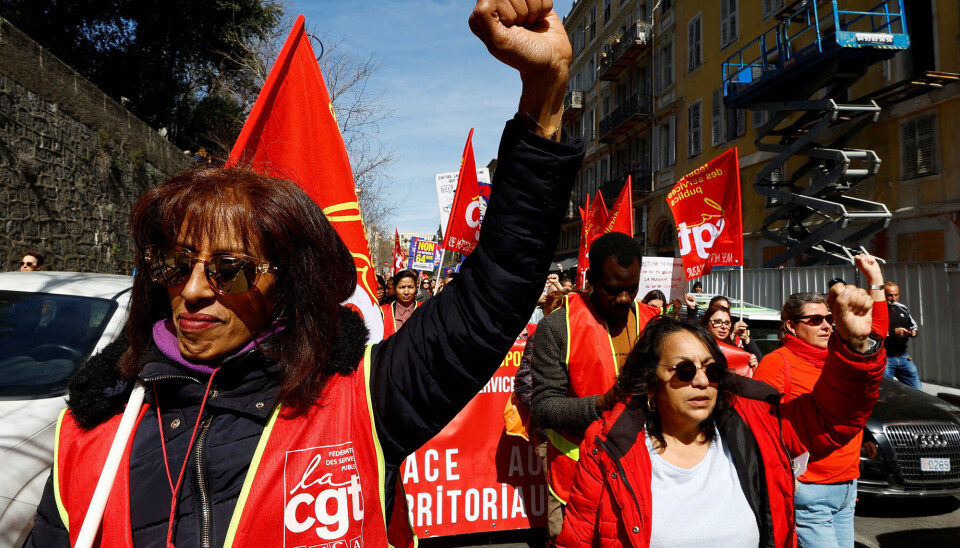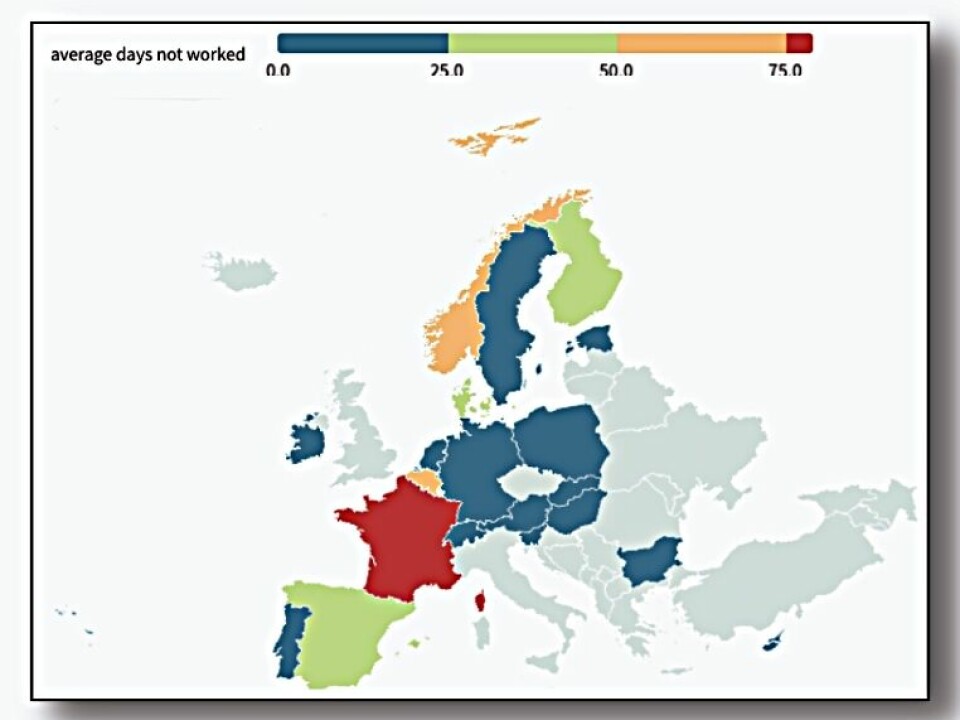
These are the European countries with the most labour strikes
Why is Norway one of the tops in Europe when it comes to strikes?
It's that time of year again, where union workers and their employers negotiate wages.
Monday this week saw around 20 000 workers in Norway taken out on strike as the Norwegian Confederation of Trade Unions (LO) and the Confederation of Norwegian Enterprise (NHO) failed to reach an agreement. A number of breweries have stopped their production, causing people to hoard beer for fear of stocks running out.
In 2020 and 2021, France, Belgium and Norway were the three countries in Europe that lost the most working days per employee due to strikes and lockouts.
These are the last two years for which the independent research institute the European Trade Union Institute (ETUI) has figures.
But if we look further back in time, Norway continues to stand out as a country with a lot of strikes.
Special strikes in Norway
“It is true that strikes are a fairly widely used tool in connection with wage negotiations in Norway,” said Åsmund Arup Seip.
Seip, who is a researcher at Fafo, an independent social science research foundation, says there are several factors that contribute to the fact that Norway loses more working days on strike than other countries.
“Strikes in Norway are often linked to collective bargaining agreements,” he said.
“We have these negotiations every year and they give the employees the right to strike. Norwegian strikes thus occur fairly regularly,” he said.
When there are initial strikes in Norway, they can grow to be quite large, and can last longer than in other countries, Seip said to sciencenorway.no.
“Workers in Norway do not go back to work until the work-related dispute is over, which means that Norwegian strikes often grow larger and larger the longer they last,” he said.
In sum, this means that Norway loses more working days per worker on strike than is common in several other countries, Seip said.

Almost never strikes in Sweden
There is a big difference in how much workers in Europe strike, ETUI's figures show.
In the last two decades combined — from 2000 to 2021 — strikes have been most often used as a weapon in labour disputes in France, Belgium and Spain, followed by Denmark, Finland and Norway.
There are almost never strikes in Sweden.
In Spain, there has been a sharp decline in strikes over the past decade. There are now clearly fewer strikes in Spain than in Norway.
There have also been declines in the widespread use of work stoppages in Germany, Great Britain, the Netherlands, Austria, Switzerland, Poland, Hungary and Portugal in recent decades.
Certainly fewer strikes now than 30 years ago
In Europe as a whole, there is a clear trend over the past 30 years: There are many fewer strikes.
In most European countries, the number of working days lost to strikes has fallen considerably since the 1990s.
Three examples are Italy, Ireland and Finland, and in the last decade, Spain.
In Norway, too, there were slightly fewer strikes in the last decade than in the 1990s.
Nevertheless, Norway was one of the five countries in Europe where strikes were used the most from 2008-2018.
The only countries in Europe with an increase in the use of the strikes as a labour weapon in the last decade have been Belgium and Cyprus.
Big differences between countries
In an article on the online news site arbeidslivet.no, which is published by Fafo, researcher Kristin Alsos also points out that strikes in Norway mostly concern wage increases.
In other countries, political strikes and strikes against downsizing or other changes in the workplace are more common.

Alsos highlights a new report from the EU's Eurofound, the European Foundation for the Improvement of Living and Working Conditions, where researchers have systematized what is known about all strikes in the EU countries and Norway in 2018 and 2019.
The researchers found large differences between European countries.
In Norway, fights and conflicts are mostly linked to collective bargaining on wages.
But in Europe as a whole, just under 40 per cent of all labour disputes occur in connection with collective bargaining. Instead, there are strikes against political decisions and against changes in the workplace.
More than half of all labour disputes in France, Germany, the Netherlands and Spain were also local conflicts.
In Norway, labour disputes are usually national, and therefore largely concern pay.
Most agreements in Europe
Europe is generally the part of the world where employees have secured the most collective agreements with employers.
In Europe, the right to strike is seen as an essential part of the employees' opportunity to secure better pay and better working conditions.
Translated by: Nancy Bazilchuk
Sources:
ETUI: "Strike map of Europe"
Euronews.next: "Which countries have the most strikes in Europe and what impact does it have on the economy?", April 2023.
Read the Norwegian version of this article on forskning.no





































